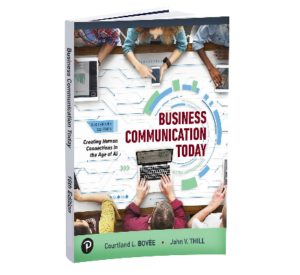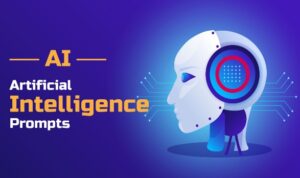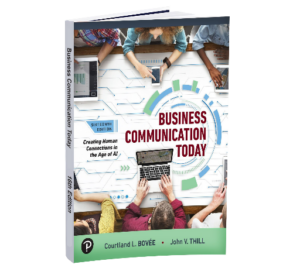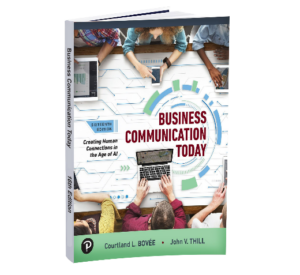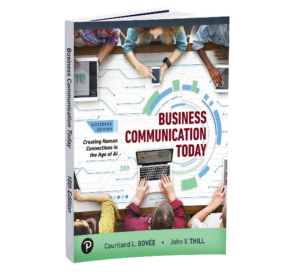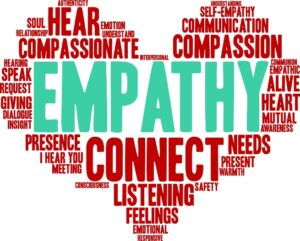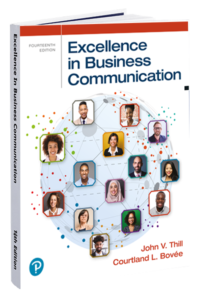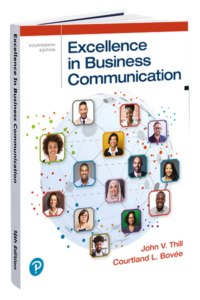This resource outlines key examples of real-world business communication failures, from public relations disasters to internal miscommunications, and provides in-depth lessons learned from each scenario. It also offers classroom discussion points to help students analyze what went wrong, explore alternative strategies, and apply these insights to future business communication practices.

United Airlines faced backlash after forcibly removing a passenger from an overbooked flight, issuing a defensive statement that ignored customer concerns and intensified public outrage.
1. United Airlines' Response to Passenger Removal Incident (2017)
Failure: After forcibly removing a passenger from an overbooked flight, United Airlines initially issued a defensive statement that failed to acknowledge customer concerns, escalating the backlash.
Expanded Lesson:
– Respond quickly, empathetically, and with responsibility in crisis communication.
– Prioritize human dignity and customer experience over rigid policy enforcement.
– Train staff at all levels to handle difficult situations with empathy and de-escalation techniques.
– Develop a crisis communication plan that includes immediate response protocols and clear guidelines for public statements.
– Regularly review and update policies to ensure they align with company values and public expectations.
– When mistakes are made, acknowledge them promptly and outline concrete steps for improvement.
Discussion Points:
– Compare United's response with how other airlines have handled similar situations.
– Ask students to rewrite United's initial statement to be more empathetic and customer-centric.
– Discuss how the airline could have engaged in a dialogue with the public to de-escalate the situation.
– Explore the long-term effects of poor crisis communication on customer loyalty and brand reputation.
– Analyze the role of social media in amplifying corporate missteps and the importance of monitoring online sentiment.
– Discuss the balance between enforcing company policies and maintaining positive customer relations.
2. Elon Musk's "Funding Secured" Tweet (2018)
Failure: Musk tweeted that he had secured funding to take Tesla private, which misled investors and resulted in an SEC lawsuit.
Expanded Lesson:
– Business communication, especially on social media, must comply with legal standards and regulations.
– High-level executives should be particularly cautious about making statements that could impact stock prices or investor decisions.
– Implement a robust social media policy that includes guidelines for executives and requires verification of sensitive information before public disclosure.
– Understand the legal implications of public statements, particularly for publicly traded companies.
– Recognize that personal social media accounts of high-profile executives can be viewed as official company communication channels.
– Consider implementing a review process for significant announcements, even on personal social media accounts.
Discussion Points:
– Discuss the legal implications of making misleading public statements, particularly in the context of securities laws.
– Ask students to develop a protocol for handling sensitive financial information in public communications.
– Explore how social media policies can prevent high-level executives from making costly mistakes.
– Analyze how Musk's personality and communication style impact Tesla's brand image and investor relations.
– Discuss the balance between transparency and confidentiality in corporate communications.
– Explore the role of board oversight in managing executive communications.
3. Peloton's Controversial Holiday Ad (2019)

This Peloton ad sparked controversy for its perceived sexist tone, depicting a woman thanking her husband for gifting her a bike to help her get in shape
Failure: The ad was perceived as sexist and tone-deaf, showing a woman receiving a Peloton bike from her husband and expressing "gratitude" for being pushed to get fit.
Expanded Lesson:
– Understand how messages can be interpreted differently across diverse audiences, and avoid reinforcing stereotypes.
– Conduct thorough market research and diverse focus group testing before launching major ad campaigns.
– Consider potential interpretations and unintended messages in advertising content.
– Develop a diverse creative team to provide varied perspectives on ad concepts.
– Be prepared to respond quickly and authentically to public backlash.
– Use controversies as learning opportunities to improve future marketing efforts and demonstrate genuine commitment to inclusivity.
Discussion Points:
– Ask students to identify how cultural perceptions can shape the reception of an advertisement.
– Have students draft a revised ad campaign that would resonate better with diverse audiences.
– Discuss the impact of social media backlash and how Peloton could have responded more effectively.
– Explore how brands can avoid reinforcing negative stereotypes in marketing.
– Analyze the importance of diverse representation in marketing teams and decision-making processes.
– Discuss how companies can turn PR crises into opportunities for brand growth and improved customer relations.
4. Boeing's Handling of the 737 Max Crashes (2019)
Failure: Boeing initially downplayed the severity of software issues leading to two fatal crashes, damaging public trust and delaying necessary action.
Expanded Lesson:
– Swift, transparent communication is critical in crisis situations, especially when safety is involved.
– Prioritize public safety over short-term financial considerations or reputation management.
– Develop a culture of transparency and accountability within the organization.
– Implement robust safety reporting systems and encourage employees to voice concerns without fear of reprisal.
– When issues arise, provide clear, factual information to all stakeholders, including the public, regulators, and customers.
– Be prepared to take immediate, decisive action to address safety concerns, even if it impacts short-term business operations.
Discussion Points:
– Discuss the ethical responsibilities of companies in handling safety issues, particularly in high-stakes industries like aviation.
– Ask students to draft a crisis communication strategy for Boeing that prioritizes transparency and public safety.
– Explore the long-term damage caused by Boeing's initial response and how it could have been mitigated.
– Compare Boeing's crisis response to other high-profile safety failures in aviation or other industries.
– Analyze the role of corporate culture in fostering or hindering effective crisis communication.
– Discuss the balance between protecting company interests and maintaining public trust during a crisis.
5. Zoom's Privacy Scandal (2020)
Failure: During the COVID-19 pandemic, Zoom experienced backlash due to "Zoom-bombing" and security vulnerabilities, which were not adequately addressed in early communications.
Expanded Lesson:
– In digital communication, security and privacy are paramount, and addressing concerns head-on helps maintain user trust.
– Rapidly growing companies must scale their security measures and communication strategies alongside their user base.
– Proactively communicate about security features and ongoing efforts to protect user data.
– Develop a robust incident response plan that includes clear communication protocols.
– Be transparent about vulnerabilities when they are discovered and provide regular updates on mitigation efforts.
– Engage with security experts and conduct regular audits to identify and address potential issues before they become public concerns.
Discussion Points:
– Analyze how Zoom's rapid growth contributed to the security and communication failures.
– Ask students to create a crisis management plan addressing the security vulnerabilities, including both technical solutions and communication strategies.
– Discuss how proactive communication about security can build trust with users.
– Compare Zoom's handling of the issue with other companies that faced privacy scandals.
– Explore the challenges of balancing user experience with security measures in digital products.
– Discuss the role of user education in maintaining digital security and how companies can effectively communicate best practices to their users.
6. Burger King UK's International Women's Day Tweet (2021)
Failure: Burger King UK tweeted "Women belong in the kitchen" to promote scholarships for female chefs but did not provide context in the initial tweet, leading to widespread backlash.
Expanded Lesson:
– Ensure messaging is clear and context is provided, especially on sensitive topics or when using provocative statements.
– Understand the limitations of social media platforms and adapt messaging accordingly.
– Consider how messages may be perceived when taken out of context or viewed in isolation.
– Be mindful of cultural sensitivities and potential misinterpretations, especially when addressing gender issues.
– Have a diverse team review potentially controversial messages before publication.
– When mistakes occur, respond quickly with a sincere apology and take concrete actions to demonstrate commitment to the intended message.
Discussion Points:
– Discuss how a well-intentioned campaign can be misinterpreted when context is missing, especially on social media.
– Ask students to draft a revised social media campaign promoting the scholarships without relying on controversial statements.
– Explore the role of social media in amplifying communication missteps and the challenges of conveying complex messages in limited character counts.
– Discuss the importance of diversity and inclusion in crafting messages that resonate with target audiences.
– Analyze the risks and potential benefits of using provocative statements in marketing campaigns.
– Explore how companies can effectively communicate their commitment to social issues without appearing opportunistic or insensitive.
7. Volkswagen's April Fool's "Voltswagen" Stunt (2021)
 Failure: Volkswagen issued a fake press release stating they were changing their name to "Voltswagen" to reflect their electric vehicle initiative. The prank confused investors and led to credibility issues.
Failure: Volkswagen issued a fake press release stating they were changing their name to "Voltswagen" to reflect their electric vehicle initiative. The prank confused investors and led to credibility issues.
Expanded Lesson:
– April Fool's jokes and marketing stunts can easily backfire, especially when they affect investor confidence or involve official channels like press releases.
– Maintain a clear distinction between marketing stunts and official corporate communications.
– Consider the potential impact on stakeholders, including investors, before engaging in pranks or humorous campaigns.
– Be aware of the legal implications of false statements, even if intended as jokes.
– If a stunt goes awry, quickly clarify the situation and apologize for any confusion caused.
– Develop guidelines for appropriate use of humor in corporate communications, considering the company's industry and reputation.
Discussion Points:
– Analyze the potential risks of using humor in business communication, especially on sensitive platforms like press releases.
– Ask students to identify when humor is appropriate in business communication and when it might cause harm.
– Discuss how companies can recover from PR blunders and rebuild credibility after a misguided marketing stunt.
– Compare this prank to other marketing stunts that went wrong or succeeded, analyzing the factors that contributed to their outcomes.
– Explore the impact of such stunts on a company's stock price and investor relations.
– Discuss alternative ways Volkswagen could have creatively promoted their commitment to electric vehicles without risking their credibility.
8. Activision Blizzard's Response to Workplace Harassment Allegations (2021)
Failure: The company initially dismissed allegations of sexual harassment and a toxic workplace culture, leading to employee walkouts and damage to its reputation.
Expanded Lesson:
– Address serious allegations with transparency, empathy, and concrete action plans.
– Foster a company culture that encourages reporting of misconduct and protects whistleblowers.
– Develop clear, enforced policies against harassment and discrimination.
– Respond to allegations with a commitment to thorough, independent investigations.
– Recognize that internal issues can quickly become public, especially in the age of social media.
– Demonstrate accountability at all levels of leadership, including potential changes in management if necessary.
– Engage in ongoing, transparent communication with employees and stakeholders throughout the process of addressing issues.
Discussion Points:
– Discuss the role of internal communication and culture in preventing workplace harassment.
– Ask students to create a communication strategy for companies facing similar crises, including both internal and external messaging.
– Explore how the company's delayed response impacted its reputation, employee trust, and potential legal liabilities.
– Compare Activision Blizzard's response with other companies facing harassment allegations, analyzing the effectiveness of different approaches.
– Discuss the importance of aligning corporate values with actual workplace practices.
– Explore the role of leadership in setting the tone for company culture and response to crises.
9. Balenciaga's Controversial Ad Campaign (2022)
Failure: Balenciaga faced backlash after releasing an ad campaign featuring children holding teddy bears dressed in bondage gear. The company's initial response was vague, and they later issued a public apology.
Expanded Lesson:
– Marketing campaigns should be thoroughly reviewed to ensure they don't unintentionally promote harmful or inappropriate messages, especially when involving children.
– Implement multi-level approval processes for sensitive or potentially controversial campaigns.
– Understand the cultural and social implications of imagery and messaging in global markets.
– When mistakes occur, issue a prompt, clear, and genuine apology that addresses specific concerns raised by the public.
– Take concrete actions to demonstrate commitment to change, such as revising internal review processes or partnering with child protection organizations.
– Recognize that in the fashion industry, provocative advertising can quickly cross ethical lines and requires extra scrutiny.
Discussion Points:
– Discuss the role of pre-campaign testing with diverse focus groups to avoid PR crises.
– Explore the difference between provocative advertising and offensive content, particularly in the fashion industry.
– Ask students to draft a crisis response statement for the company, considering different stakeholder reactions (consumers, child protection advocates, fashion industry peers).
– Have students consider how social media can amplify communication failures and the importance of monitoring online sentiment.
– Analyze the potential long-term impact on brand reputation and discuss strategies for rebuilding trust after such a controversy.
– Explore the ethical considerations of using children in advertising, especially for luxury or adult-oriented products.
10. Ticketmaster's Handling of Taylor Swift's Concert Ticket Sales (2022)
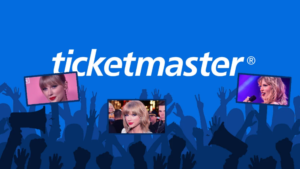
Ticketmaster faced public backlash and government scrutiny after failing to manage the overwhelming demand for Taylor Swift concert tickets. The site crashed, leaving fans frustrated with long wait times and canceled orders.
Failure: Ticketmaster faced public outrage and government scrutiny due to its inability to handle the overwhelming demand for Taylor Swift concert tickets. The site crashed, and fans were left frustrated after long wait times and canceled tickets.
Expanded Lesson:
– Ensure technical infrastructure can meet consumer demand, especially for high-profile events.
– Develop and communicate clear contingency plans for managing high-traffic situations.
– Provide transparent, real-time updates during major events to manage customer expectations.
– Implement fair and clearly communicated ticketing policies to prevent perceptions of unfairness or scalping.
– Be prepared to offer meaningful compensation or alternatives when systems fail to meet customer expectations.
– Engage proactively with artists, venues, and promoters to develop comprehensive event management strategies.
Discussion Points:
– Analyze the role of customer service communication during technical failures and how it can mitigate or exacerbate customer frustration.
– Ask students to brainstorm proactive communication strategies to address issues before customers reach out.
– Discuss how better communication could have prevented government scrutiny and potential regulatory action.
– Have students compare Ticketmaster's response with successful handling of high-demand situations by other companies in various industries.
– Explore the challenges of managing customer expectations in situations of extremely high demand and limited supply.
– Discuss the ethical implications of ticketing practices and how companies can balance profitability with fairness to consumers.
11. Southwest Airlines' Holiday Travel Disaster (2022)
Failure: Southwest Airlines canceled thousands of flights during the 2022 holiday season due to outdated scheduling software and bad weather, but their communication was slow and unclear, frustrating passengers.
Expanded Lesson:
– Proactive communication and contingency planning are essential, especially during high-demand periods.
– Invest in updating critical infrastructure and systems to prevent operational failures.
– Develop a comprehensive crisis communication plan that includes clear, frequent updates to customers, employees, and other stakeholders.
– Train front-line staff to effectively communicate with customers during crises, providing them with up-to-date information and empowering them to make decisions.
– Be transparent about the causes of issues and provide clear timelines and processes for resolution.
– Offer meaningful compensation and assistance to affected customers to rebuild trust and mitigate negative experiences.
Discussion Points:
– Compare Southwest's delayed response with companies that have handled crises effectively, analyzing the key differences in approach.
– Ask students to create a communication timeline that could have better managed the crisis, including pre-emptive messaging and regular updates.
– Explore the impact of outdated technology on communication and customer service, and discuss the importance of technological investment in customer-facing industries.
– Discuss how companies can use transparency to rebuild trust after failures, including the role of leadership in crisis communication.
– Analyze the long-term impact of such crises on brand loyalty and discuss strategies for customer retention post-crisis.
– Explore the challenges of balancing cost-cutting measures with maintaining robust operations and customer service.
12. Meta's (Facebook) Layoff Announcement (2022)
Failure: Meta announced mass layoffs via a company-wide email, which led to public criticism over the impersonal and sudden nature of the communication, affecting employee morale.
Expanded Lesson:
– When dealing with sensitive issues like layoffs, communication should be handled with empathy, transparency, and personalization where possible.
– Develop a comprehensive communication plan for major organizational changes, including cascading information through management levels.
– Provide support resources for affected employees, including clear information about severance, benefits, and job search assistance.
– Train managers to have difficult conversations and provide support to their teams during uncertain times.
– Consider the timing and method of announcements carefully, avoiding impersonal mass communications for highly sensitive issues.
– Be prepared to address concerns from remaining employees about job security and the company's future direction.
Discussion Points:
– Discuss the importance of internal communication and how to balance empathy with transparency during difficult organizational changes.
– Have students draft a more humane internal memo addressing layoffs, including follow-up communication plans.
– Explore the ethical considerations of mass layoffs in tech companies and how they affect company culture and employer brand.
– Compare Meta's layoff communication with companies that handled similar situations more empathetically,
Discussion Points: (continued)
– Compare Meta's layoff communication with companies that handled similar situations more empathetically, analyzing the key differences in approach.
– Discuss the role of leadership visibility and accountability during major organizational changes.
– Explore how companies can maintain employee morale and productivity in the aftermath of large-scale layoffs.
– Analyze the impact of public perception on a company's ability to attract talent in the future after handling layoffs poorly.
13. Adidas Ending Its Partnership with Kanye West (2022)

Adidas faced public outrage for its delayed response to Kanye West's (Ye) antisemitic remarks. Critics argued that the company prioritized profit over principles, sparking widespread backlash.
Failure: Adidas delayed its response after Kanye West's (Ye) controversial antisemitic comments. The slow reaction caused public outrage, with critics arguing Adidas prioritized profit over principles.
Expanded Lesson:
– Speed and moral clarity are vital in crisis communication, especially when a partner or spokesperson's actions contradict the brand's values.
– Develop clear guidelines and protocols for responding to partner misconduct, including predefined thresholds for action.
– Recognize that in the age of social media, silence can be interpreted as complicity.
– Balance legal considerations with ethical responsibilities and public expectations when severing ties with high-profile partners.
– Prepare contingency plans for high-risk partnerships, including communication strategies and potential financial impacts.
– Use such incidents as opportunities to reinforce company values and commitment to social responsibility.
Discussion Points:
– Analyze the impact of delaying public statements during high-profile controversies, considering both financial and reputational costs.
– Ask students to develop a communication plan that could have sped up Adidas' response, including potential pre-emptive measures.
– Discuss how businesses should evaluate partnerships based on alignment with company values and potential risks.
– Explore the long-term brand damage that can result from slow crisis responses versus potential short-term financial losses from quick action.
– Analyze the role of public pressure and social media activism in corporate decision-making.
– Discuss strategies for brands to distance themselves from controversial figures while addressing the concerns of customers and stakeholders.
14. Crypto Exchange FTX's Collapse (2022)
Failure: FTX's sudden collapse left investors and customers in shock, as its leadership provided insufficient communication about the company's financial issues and eventual bankruptcy.
Expanded Lesson:
– Transparency is crucial in financial industries, especially during crises. Leaders must provide clear and timely information to prevent panic and minimize
damage.
– Implement robust risk management and communication protocols, especially in volatile or emerging financial sectors.
– Regularly communicate with stakeholders about the company's financial health and risk exposure.
– In times of crisis, provide frequent, clear updates about the situation, potential impacts, and steps being taken to address issues.
– Develop relationships with regulators and industry bodies to facilitate open communication channels during crises.
– Educate customers about the risks associated with their investments, especially in new or complex financial products.
Discussion Points:
– Compare FTX's communication with other financial crises like the 2008 financial collapse, analyzing differences in regulatory environment and public trust.
– Ask students to write a clearer and more transparent investor letter regarding the situation, addressing key concerns and outlining next steps.
– Discuss how to balance protecting investors while being transparent in a communication crisis, especially in a largely unregulated industry.
– Explore the ethics of financial communication in a rapidly evolving sector like cryptocurrency.
– Analyze the role of media in shaping public perception during financial crises and how companies can effectively manage their message.
– Discuss the importance of corporate governance and internal controls in preventing and managing financial crises.
15. Elon Musk's Twitter Takeover and Mass Layoffs (2022)
Failure: After purchasing Twitter, Elon Musk's decision to lay off a significant portion of the workforce was communicated poorly, with many employees finding out via social media or abruptly losing access to internal systems.
Expanded Lesson:
– When conducting mass layoffs, especially after an acquisition, clear and compassionate internal communication is critical to maintaining morale and reputation.
– Develop a structured communication plan for major organizational changes, including a clear timeline and multiple channels of communication.
– Provide managers with the necessary information and resources to support their teams during transitions.
– Recognize the impact of leadership communication style on company culture and public perception.
– Balance the need for swift action in turnaround situations with the importance of respectful, human-centered communication.
– Be prepared to address concerns from remaining employees, customers, and other stakeholders about the company's future direction.
Discussion Points:
– Analyze how Musk's communication style contrasts with best practices in internal and external communication during major organizational changes.
– Have students simulate how they would communicate layoffs if they were the CEO of Twitter, considering both internal and external stakeholders.
– Discuss the impact of social media on internal company morale during major organizational changes, especially for a social media company.
– Explore how communication about layoffs affects brand perception, public trust, and the company's ability to attract talent in the future.
– Analyze the legal and ethical implications of how layoffs are communicated and executed.
– Discuss strategies for maintaining productivity and engagement among remaining employees after large-scale layoffs.
16. Boeing 737 MAX Software Failure (2019)

A software malfunction caused two fatal plane crashes, claiming 346 lives. Investigations found that a faulty angle of attack sensor and insufficient pilot training were significant factors in the tragedies.
Failure: A software issue led to two fatal plane crashes, resulting in the loss of 346 lives. Investigations revealed that a faulty angle of attack sensor and inadequate pilot training contributed to the tragedies.
Expanded Lesson:
– Open and transparent communication regarding safety issues is paramount, especially in industries where lives are at stake.
– Implement robust safety reporting systems that encourage employees to voice concerns without fear of reprisal.
– Prioritize safety over short-term financial considerations or reputation management.
– Develop clear communication protocols for addressing potential safety issues, including escalation procedures and public disclosure guidelines.
– Invest in comprehensive training programs for users of complex systems, ensuring they understand both normal operations and potential failure modes.
– When issues arise, provide clear, factual information to all stakeholders, including the public, regulators, and customers.
Discussion Points:
– Explore how Boeing could have communicated more effectively about the 737 MAX software issues before the crashes, considering both internal and external stakeholders.
– Discuss the impact of Boeing's communication failures on public trust in the company and the aviation industry as a whole.
– Analyze the role of corporate culture in fostering or hindering effective safety communication.
– Compare Boeing's crisis response to other high-profile safety failures in aviation or other industries.
– Discuss the balance between protecting company interests and maintaining public safety, especially when lives are at risk.
– Explore the long-term reputational and financial impacts of prioritizing short-term gains over safety concerns.
17. L'Oreal and its Sustainability Claims (2023)
Failure: L'Oreal was accused of greenwashing when its claims about sustainable products were found to be misleading, sparking consumer backlash and calls for regulatory scrutiny.
Expanded Lesson:
– Companies must ensure that their sustainability and environmental claims are verifiable and transparent to avoid reputational damage.
– Develop clear, measurable sustainability goals and regularly report progress to stakeholders.
– Implement rigorous internal processes to verify sustainability claims before making them public.
– Be transparent about the challenges and limitations in achieving sustainability goals.
– Engage with independent third-party auditors to verify sustainability claims and practices.
– When mistakes or overstatements are identified, acknowledge them promptly and outline concrete steps for improvement.
Discussion Points:
– Ask students to audit L'Oreal's sustainability communication to identify potential greenwashing issues and suggest improvements.
– Explore the role of independent verification in corporate sustainability messaging and how it can enhance credibility.
– Have students draft clearer, more transparent sustainability communication that aligns with corporate goals while avoiding greenwashing.
– Discuss the long-term reputational impact of misleading sustainability claims versus the potential short-term gains.
– Analyze the increasing consumer and regulatory focus on corporate sustainability claims and its implications for marketing strategies.
– Explore how companies can effectively communicate their sustainability efforts while navigating the complexities of global supply chains and varying environmental standards.
18. Snapchat's AI Chatbot Criticism (2023)
Failure: Snapchat introduced an AI chatbot feature, but users complained about privacy concerns and insufficient information about how the bot handles data.
Expanded Lesson:
– New technological features, especially those involving AI and user data, must be introduced with clear communication about privacy and security implications.
– Develop comprehensive privacy policies that are easily understandable by users.
– Implement user-friendly controls for data sharing and AI interactions.
– Proactively address potential concerns about AI and data usage before they become public issues.
– Engage with privacy advocates and conduct thorough beta testing to identify potential issues before wide release.
– Be transparent about the limitations and potential risks of AI technology, as well as the steps taken to mitigate these risks.
Discussion Points:
– Analyze the ethical implications of privacy issues in AI-based communication, considering different stakeholder perspectives.
– Ask students to create a product launch communication plan addressing data privacy concerns upfront, including user education materials.
– Explore how Snapchat could have better communicated the benefits and risks of AI technology to its predominantly young user base.
– Discuss how to balance innovation with ethical transparency in communication, especially for features that may not be fully understood by the general public.
– Analyze the role of user trust in the success of social media platforms and how privacy concerns can impact user engagement.
– Explore the regulatory landscape surrounding AI and data privacy, and discuss how companies can stay ahead of potential legal issues.
19. Starbucks' Union Busting Allegations (2023)

Starbucks faced backlash for allegedly retaliating against pro-union employees, harming its reputation as a company that supports its workforce.
Failure: Starbucks faced criticism for allegedly retaliating against pro-union employees, damaging its reputation as an employee-friendly company.
Expanded Lesson:
– Companies must align their internal practices with their public brand values and communicate clearly during labor disputes.
– Develop clear, fair policies for addressing employee concerns and labor organizing efforts.
– Train managers to handle union-related discussions and activities in compliance with labor laws.
– Maintain open lines of communication with employees at all levels to address concerns before they escalate.
– When facing public criticism, respond with transparency and a commitment to fair labor practices.
– Recognize that in the age of social media, internal labor disputes can quickly become public relations issues.
Discussion Points:
– Compare Starbucks' handling of labor disputes with companies that have successfully managed union negotiations, analyzing key differences in approach.
– Ask students to role-play as Starbucks executives, crafting responses to employee and public concerns about unionization.
– Discuss the importance of transparent communication in labor relations and how it affects brand reputation, especially for companies with a strong public-facing presence.
– Explore how Starbucks could have maintained a consistent message while engaging with different stakeholder groups (employees, customers, investors).
– Analyze the impact of labor disputes on customer perception and brand loyalty, especially for companies that market themselves as socially responsible.
– Discuss strategies for companies to maintain positive employee relations while also meeting business objectives.
20. Google's Bard AI Launch (2023)
Failure: Google's launch of its AI chatbot, Bard, suffered a credibility blow after the bot provided inaccurate information during a live demo, leading to a stock drop.
Expanded Lesson:
– Thorough testing and preparation are critical when launching AI products, and transparency about limitations is essential to maintain trust.
– Clearly communicate the current capabilities and limitations of AI technologies to manage public expectations.
– Implement rigorous quality control processes for AI demonstrations and public releases.
– Develop crisis communication plans specifically for AI-related incidents, including strategies for addressing inaccuracies or biases.
– Foster a culture of transparency that acknowledges the evolving nature of AI technology and the potential for errors.
– Use setbacks as opportunities to educate the public about the complexities and ongoing development of AI systems.
Discussion Points:
– Ask students to develop a communication plan to address product shortcomings during a public demo, including both immediate response and long-term trust-building strategies.
– Compare Google's response with other tech launches that faced early issues, analyzing the effectiveness of different crisis management approaches.
– Discuss how to manage expectations around new technologies, particularly AI, where uncertainties and limitations are common.
– Explore how Google could have prepared the public and investors for potential flaws in the product while still generating excitement about its capabilities.
– Analyze the impact of AI accuracy on public trust and discuss strategies for building confidence in AI systems over time.
– Discuss the ethical implications of releasing AI technologies to the public and the responsibilities of tech companies in ensuring their safe and accurate use.
These expanded lessons and discussion points provide a more comprehensive framework for understanding and learning from these business communication failures. They offer students and professionals deeper insights into the complexities of effective communication in various business contexts and the potential consequences of miscommunication.
Avoiding Business Blunders: How Excellence in Business Communication Prepares Students for Real-World Challenges
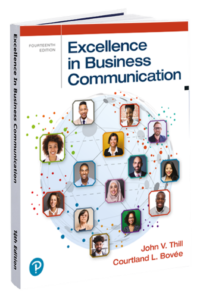 Bridging the Gap: How Excellence in Business Communication Turns Failures into Learning Opportunities
Bridging the Gap: How Excellence in Business Communication Turns Failures into Learning Opportunities
Excellence in Business Communication is the ideal textbook for instructors seeking to teach students how to avoid common business communication failures, such as those highlighted in the resource “20 Failures in Business Communication and Lessons Learned.” The textbook provides a comprehensive framework that equips students with essential skills to navigate complex communication scenarios effectively.
One of the strengths of Excellence in Business Communication is its focus on real-world applications and case studies, aligning closely with the lessons derived from past communication failures. By using these case studies, the textbook allows students to analyze what went wrong in real-life situations—such as crises faced by companies like United Airlines, Boeing, and Zoom—and offers actionable strategies for improvement. These examples create a practical, hands-on learning experience, making theoretical concepts relatable and immediately applicable.
Excellence in Business Communication emphasizes ethical communication and transparency, critical components highlighted in the article as essential for preventing PR disasters and internal communication breakdowns. Through structured exercises and discussions, students gain an understanding of the ethical implications of business decisions and the importance of empathy, responsibility, and swift, transparent action in managing crises.
The textbook also incorporates neuroscience-based techniques to enhance student learning and retention, helping them internalize best practices for effective communication. This approach ensures that the lessons taught are not only absorbed but also retained and applied in real-life business scenarios, making Excellence in Business Communication an invaluable resource for developing communication skills that prevent failures and build a foundation for success.
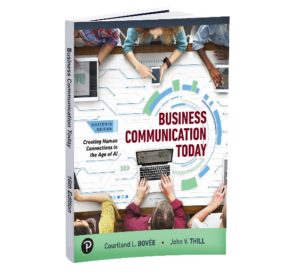 Business communication instructors and their students can step into the future of business communication with the new, groundbreaking 16th edition of Business Communication Today— where artificial intelligence meets time-tested principles. For the first time, artificial intelligence (AI) is seamlessly integrated into every chapter, making this the first business communication text on the market to offer comprehensive AI coverage. Order an examination copy today.
Business communication instructors and their students can step into the future of business communication with the new, groundbreaking 16th edition of Business Communication Today— where artificial intelligence meets time-tested principles. For the first time, artificial intelligence (AI) is seamlessly integrated into every chapter, making this the first business communication text on the market to offer comprehensive AI coverage. Order an examination copy today.